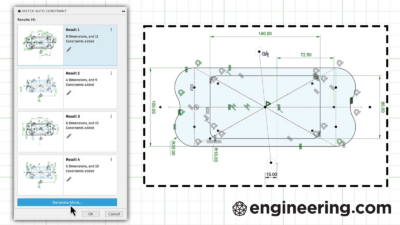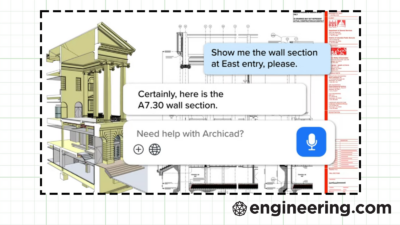A simplified workflow that helps prevent disease may impact product designs forever.
In collaboration with Saint-Louis Hospital AP-HP in Paris, France, engineering simulation software company Dassault Systèmes announced a new simulation and augmented reality workflow capable of simulating the spread of disease using computational fluid dynamics (CFD). Though this workflow is targeting healthcare providers, design engineers in the industry will need to adapt as it makes the market more competitive.

Using the workflow, Dassault Systèmes was able to create a virtual twin of the hospital’s dialysis unit which consisted of an open space capable of holding 50 patients a week. Healthcare providers were then able to see how particles circulate in the air to better understand the importance of ventilation and masks. The simulations showed viruses floating over patient dividers and equipment to spread throughout the room.
The twin was made on the simple, and free, space optimization tool HomeByMe—using building blueprints and 3D scans. The twin was then input into SIMULIA to simulate transmissions based on different respiratory, airflow and medical equipment layout scenarios. This means that the same tool used by laypeople to help sell homes and optimize Feng Shui can be used by healthcare workers to design layouts and select equipment.
“Dassault Systèmes had already worked on projects at other hospitals in Paris and understood our mission to offer the highest level of care. Its solutions allowed us to visualize the production of respiratory particles, follow their trajectory, and see how they could spread from patient to patient,” said Dr. Guillaume Mellon, attending physician and head of the Infection Prevention and Control team at Saint-Louis Hospital AP-HP. “This incredibly innovative educational experience made our health professionals more aware of respiratory cross-transmission risks in the hospital. The entire experience exceeded my expectations.”
It’s true that engineers modeled the particle flow in the room, but with the success of this trial run it’s hard to not see Dassault Systèmes, or someone else, making this workflow into a simplified simulation app targeting healthcare providers.
“Virtual twins are poised to transform daily patient care and infection prevention in the coming years,” said Claire Biot, vice president of Life Sciences and Healthcare Industry at Dassault Systèmes. “We’ve already completed projects with a number of major hospitals that successfully demonstrated how our virtual twin technology can help identify and optimize safety measures.”
By giving healthcare providers this level of insight into the selection and layout of equipment it will put more pressure on engineers within the industry to ensure that their medical device designs are optimized to reduce transmissions. This will require engineers to perform CFD simulations of their designs within operational environments to ensure their products surpass the performance of the competition. This will be especially important for those designing partitions and large equipment which will affect the flow of air within a room.



